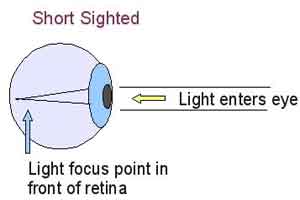- Home
- Editorial
- News
- Practice Guidelines
- Anesthesiology Guidelines
- Cancer Guidelines
- Cardiac Sciences Guidelines
- Critical Care Guidelines
- Dentistry Guidelines
- Dermatology Guidelines
- Diabetes and Endo Guidelines
- Diagnostics Guidelines
- ENT Guidelines
- Featured Practice Guidelines
- Gastroenterology Guidelines
- Geriatrics Guidelines
- Medicine Guidelines
- Nephrology Guidelines
- Neurosciences Guidelines
- Obs and Gynae Guidelines
- Ophthalmology Guidelines
- Orthopaedics Guidelines
- Paediatrics Guidelines
- Psychiatry Guidelines
- Pulmonology Guidelines
- Radiology Guidelines
- Surgery Guidelines
- Urology Guidelines
Outdoor Light May Lower Short-Sightedness in Children

Increasing exposure to outdoor light can significantly reduce short-sightedness in children, a new study has found. The findings revealed that it is not 'near work' on computer and other screens that causes myopia, but a lack of adequate outdoor light.
"Children exposed to the least outdoor light had faster eye growth and hence faster myopia progression," said lead researcher Scott Read, optometrist and associate professor at Queensland University Of Technology in Australia.
Also, for those who already have myopia, increasing time outside is likely to reduce the progression of the vision problem. Children should spend more than an hour and preferably at least two hours a day in the outdoor light to help prevent myopia from developing and progressing.
"Optometrists need to make their patients aware that less than 60 minutes' exposure to light outdoors per day is a risk factor for myopia," Read suggested.
"This new finding is of significant importance in our endeavour to mitigate the growing rate of myopia in children," said Kate Gifford, president of Optometry Australia.
The team measured children's eye growth via study participants wearing wristwatch light sensors to record light exposure and physical activity for a fortnight during warmer then colder months to give an overall measurement of their typical light exposure.
In February, it was announced that half the world's population will be short-sighted by 2050 with many at risk of blindness. Ten percent of the world's population will be at risk of blindness by 2050 if steps are not taken to stop myopia turning into high myopia (requiring glasses with a prescription of minus five or stronger), according to Brien Holden Vision Institute in Sydney.
The findings were presented at the Australian Vision Convention in Queensland, Australia.

Disclaimer: This site is primarily intended for healthcare professionals. Any content/information on this website does not replace the advice of medical and/or health professionals and should not be construed as medical/diagnostic advice/endorsement or prescription. Use of this site is subject to our terms of use, privacy policy, advertisement policy. © 2020 Minerva Medical Treatment Pvt Ltd